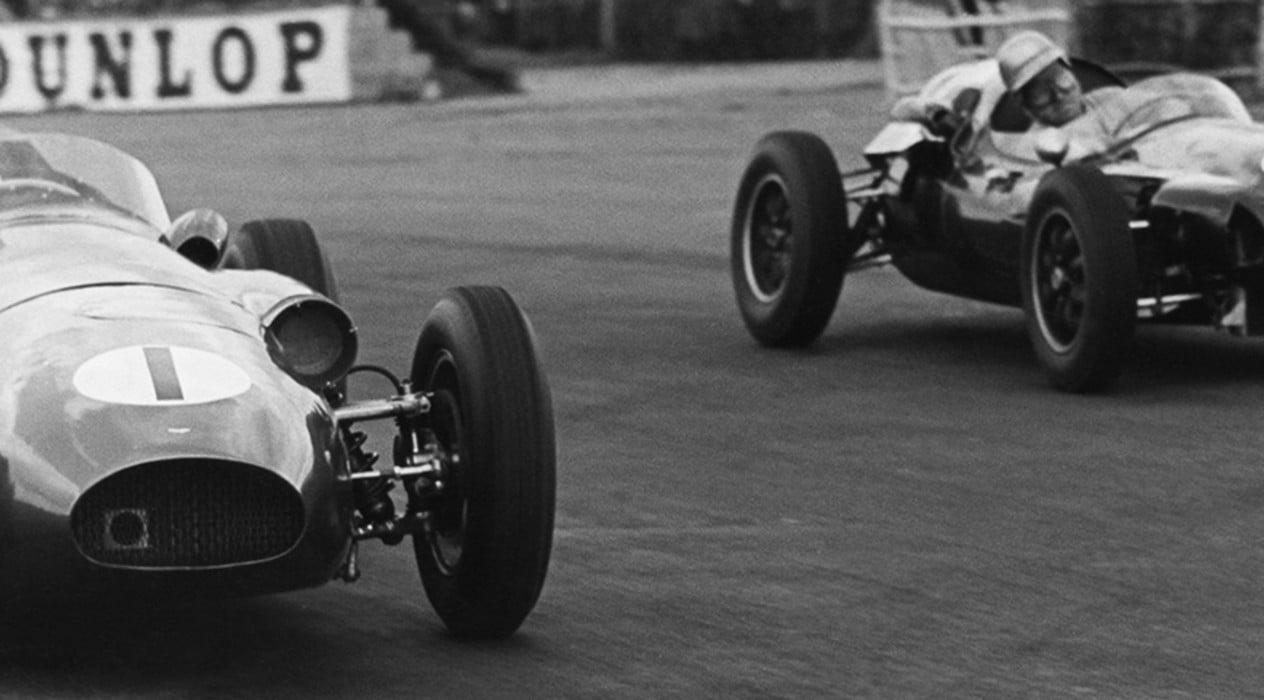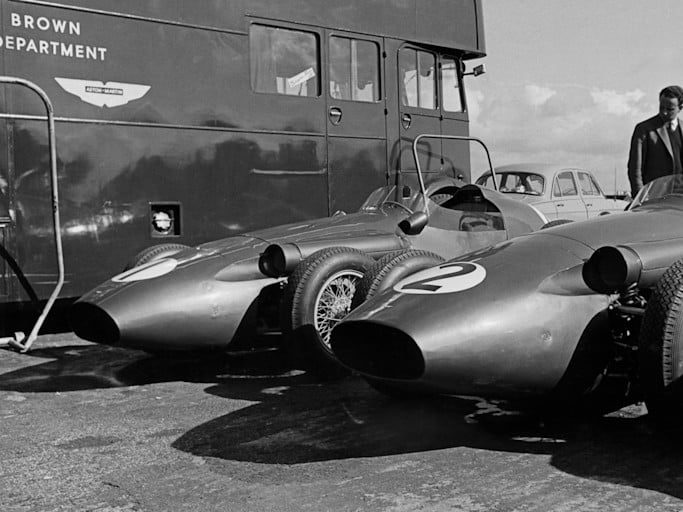
It may be over 60 years since Aston Martin lined up on the F1 grid, but the British marque has a unique history in Grand Prix racing that stretches back long before the inaugural Formula 1 World Championship in 1950.
It took less than 10 years for Aston Martin to appear on the international racing scene. Lionel Martin and Robert Bamford’s drive to create peerless sports cars began in 1913 and, after impressing on the Hillclimb courses of Great Britain, by 1922 they were ready to make their international racing debut. The event? The 1922 French Grand Prix – a race run over 60 laps of the gruelling 13km Strasbourg circuit which, totalling more than 800km in length, was a prime example of the punishing nature of early Grand Prix racing. Regulations of the era necessitated engines no larger than two litres in two-seater cars weighing a minimum of 650kg – a far cry from the highly advanced V6-turbo-hybrid-powered 700kg+ cars in modern-day F1.
Count Louis Zborowski – a billionaire by today’s standards – was a motorsport fanatic who partnered his resources with the potential of Aston Martin to create an entirely new 16-valve, twin overhead cam, four-cylinder engine for 1922 – aided by close friend and fellow racer, Clive Gallop.
Aston Martin would enter a pair of cars for Zborowski and Gallop, and although both retired before half-distance with engine-related problems – a consequence of their rapid development – the foundations were set, as the British marque soon began to flourish in competition.

Brown soon began an ambitious plan: a bid to topple the giants of both the World Sportscar Championship and Formula 1.
A first podium came that year at the Grand Prix de Penya Rhin at Villafranca, with another following in 1923 at the Grand Prix de Boulogne and a string of uniquely named cars including the ‘Green Pea’, the ‘Razor Blade’ and the ‘Halford Special’ setting world and endurance speed records in the coming years.
With Zborowski’s tragic death in a 1924 racing accident temporarily disrupting Aston Martin’s progress on the racing scene, it wasn’t until the 1940s – after the Second World War – that the British marque had the opportunity to make headlines in Grand Prix racing.
It took stockbroker and motorsport enthusiast Jock Horsfall’s attempt on the 1946 Sports Car Grand Prix Automobile de Belgique in Brussels to reignite the flame – winning the event in an Aston Martin that was over 10 years old against the much-more fancied BMW, Frazer Nash and Alvis entries.
The car, powered by a four cylinder, 1,950cc overhead cam engine, produced around 125bhp, and weighed around 800kg. With an ‘Ulster Style’ open body, two seats, and separate wings it could hit an impressive 120mph.

Three years later, Horsfall would take second in class and fourth overall in the 1949 Spa 24-hour race as a privateer – an achievement made all the more remarkable in that, while he had Paul Frère available as a co-driver, Horsfall chose to drive the car for the entire 24 hours single-handed.
Although he was sadly killed in a racing incident at Silverstone not long after, his success was a timely reminder of the British marque’s potential – a fact recognised by the Aston Martin Owners’ Club, who to this day organise an annual race event in his memory: the St. John Horsfall Memorial Trophy.
By the end of the 1940s, Sir David Brown had taken the reigns at Aston Martin and created the Lagonda brand in 1947. Brown knew the benefits motorsport could bring to the marque and would instigate Aston Martin’s incredible success story in sportscar racing – particularly at Le Mans.
He soon began an ambitious plan: a bid to topple the giants of both the World Sportsar Championship and Formula 1. The genesis was the Le Mans-winning DBR1, but it would eventually be the DBR4 that took on F1 in the late 1950s.
In 1954, F1 had switched to a new formula of 2.5-litre engines, with Ferrari, Maserati and Mercedes competing for honours. Aston Martin simply didn’t have the resources of these giants and had to box clever, simultaneously developing the DBR1 sportscar alongside the Grand Prix DBR4.
John Wyer, who later went on to oversee Aston Martin’s 1959 Le Mans-winning effort having played a key role in iconic victories for Porsche and Ford, was the man in charge of Aston’s Grand Prix effort and was confident in taking on the big boys, but the reality proved different.
Aston Martin's Le Mans 1959 victory

After a promising start, with Roy Salvadori taking second in the non-championship International Trophy race at Silverstone in 1959, a new era of rear-engine F1 car designs left the DBR4 behind. Although Salvadori took sixth in the Portuguese and British Grands Prix, this would be as good as it would get.
With the DBR5 built for the 1960 season effectively being a development of the DBR4 concept, the marque sadly didn’t make the step forward required to compete. An 11th place finish at Silverstone proved the end of the road, as attentions switched back to the more fertile ground of sportscar racing.
Sixty years on, the 2021 season marks the beginning of a new era for Aston Martin in Formula One, but the ambitions remain much the same – to take on the big boys and send a message to the world about what the Aston Martin marque stands for in the process. The journey is only just beginning…
































